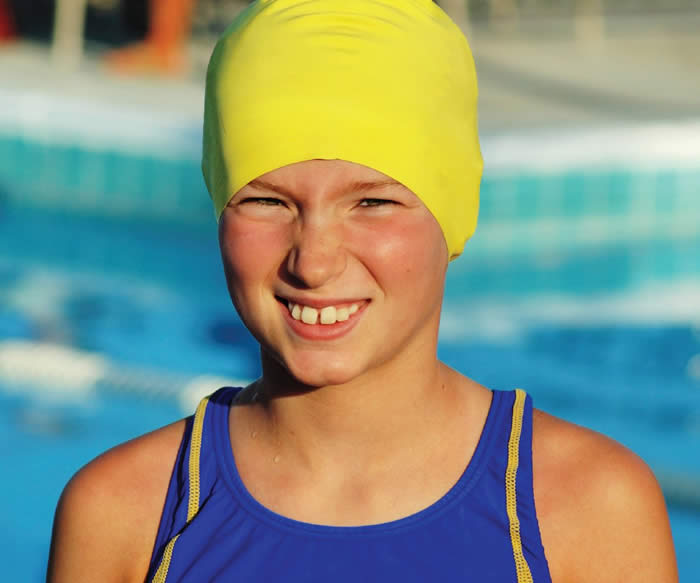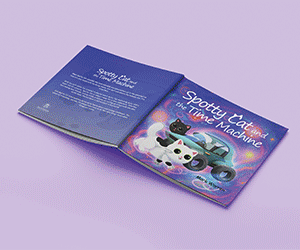Primary Times - the definitive what’s on and where to go family guide of activities and events for children of primary school age. Things to do with your kids during the school holidays including arts and craft activities, music and theatre for children, parties, competitions, days out, and family attractions along with term time drama schools, dance classes, after school clubs and sports activities. Things to do at a place near you!
Helping nervous children to enjoy swimming

Sitting poolside, it’s fascinating to see how different children approach the water. The fearless ones bomb into the pool and create a large ripple of waves, much to their parents’ disapproval. At the shallow end, other armband-clad youngsters pace the perimeter, gazing at the wet, wavy stuff, sniffing that alien chlorine, trying to look brave, and fearful of taking the plunge.
Yet, the only way for a water-averse child to progress is to persevere with swimming pool visits until he or she feels comfortable enough to dip those little toes in! Rewards for such early bravery will be repaid by the bucket-load, as children grow older. And, happily, two thirds of the world’s surface will suddenly become less threatening.
The huge importance of teaching a child to swim cannot be better highlighted than by the statistic that drowning is the third most common cause of accidental death amongst children in the UK. Tragically, around 40 children drown each year. Most accidents are known to have happened in inland waters, such as lakes, rivers and canals; followed by accidents around the coast; and then in swimming pools. So, it goes without saying that children need to learn a healthy respect for water and understand not to push out beyond the limits of safety. Basic water safety tips are available from your local lifeguard or via the RoSPA website - www.rospa.org.uk where you will be flooded with water safety advice and information.
Yet the greatest way to learn basic water safety is simply to learn to swim. And the teasing appeal of crystal-clear water on a scorching day makes summer the perfect time of year to start swimming or to refresh techniques. With this natural attraction towards water at this time of year, it is also a great time for your child to learn to swim or to improve that swimming technique. In addition to basic water safety, the advantage of learning to swim is that it is a healthy activity which can be continued throughout life. As it exercises the whole body, regular swimming also builds stamina, muscle strength and cardio-vascular fitness. Plus it helps combat obesity and improve poor levels of fitness. There are also nonphysical advantages to swimming, such as learning self-discipline and gaining a sense of sportsmanship. Research has shown that, in general, as a group, swimmers seem to do better in school than non-swimmers.
Swimming at School
It’s worth noting that swimming is considered integral to the National School Sport Strategy. The ASA’s (Amateur Swimming Association) vision is to ensure that every child has the opportunity to participate in a high quality school swimming programme, delivered by appropriately qualified swimming teachers. Children in the UK are encouraged to swim to the National Curriculum standard of 25 metres by the time they leave Primary School. A top-up scheme of half-hour intensive daily lessons for two weeks during term time is available for school children who cannot swim by the age of 11.
Outside school, many local pools run summer crash courses designed to enhance swimming performance significantly. Look out for the pools that offer free general swimming sessions for children. Ask at your local pool or check out the ASA website: www.britishswimming.org or call 0871 200 0928.
Once a child can learn to swim, there will be oceans of access to a wide range of other water-based activities. We’ve listed some of the more popular ones here:
Kayaking/Canoeing
The appeal of kayaking continues to grow and children can learn the basic skills at some local swimming pools, rivers, lakes or reservoirs. For more, go to the British Canoe Union website at www.bcu.org.uk or call 0115 982 1100. As soon as children can swim, they can learn to snorkel. And as they get older; they can master the basics skills of diving. For more information on becoming a SASY member (Supplied Air Snorkelling for Youth), go to www.padi.com. Children aged 8 and over can join the Bubblemaker programme or Seal Team, both designed to teach the fundamentals of diving.
Sailing and Windsurfing
The aquatic sports of sailing and windsurfing will appeal to any water baby. The Royal Yachting Association runs award schemes to teach children the ropes of basic sailing and windsurfing. Sport England’s recent award to the RYA of a grant totalling £1.1 million is designed to further develop sailing and windsurfing for young people, so the facilities made available are set to improve. The funding will enhance the provision of junior and youth training, and race training. It will provide additional coaching and coaching resources throughout England. For details visit the Royal Yachting Association website at www.rya.org.uk.
Surfing
The popularity of surfing amongst girls and boys has exploded over the last few years. No longer considered an extreme sport just for their teenage peers, some surf schools are now offering private one-to-one tuition to children as young as six. In general, most surf schools teach youngsters from age eight upwards. Soft boards otherwise known as famines are used for beginners as they are easier to balance on and will not hurt the novice surfer the same way a hard board would.
If your child would like to try this exciting sport, you can find a list of registered surf schools at the British Surfing Association website - www.britsurf.co.uk or call 01637 876 474.




